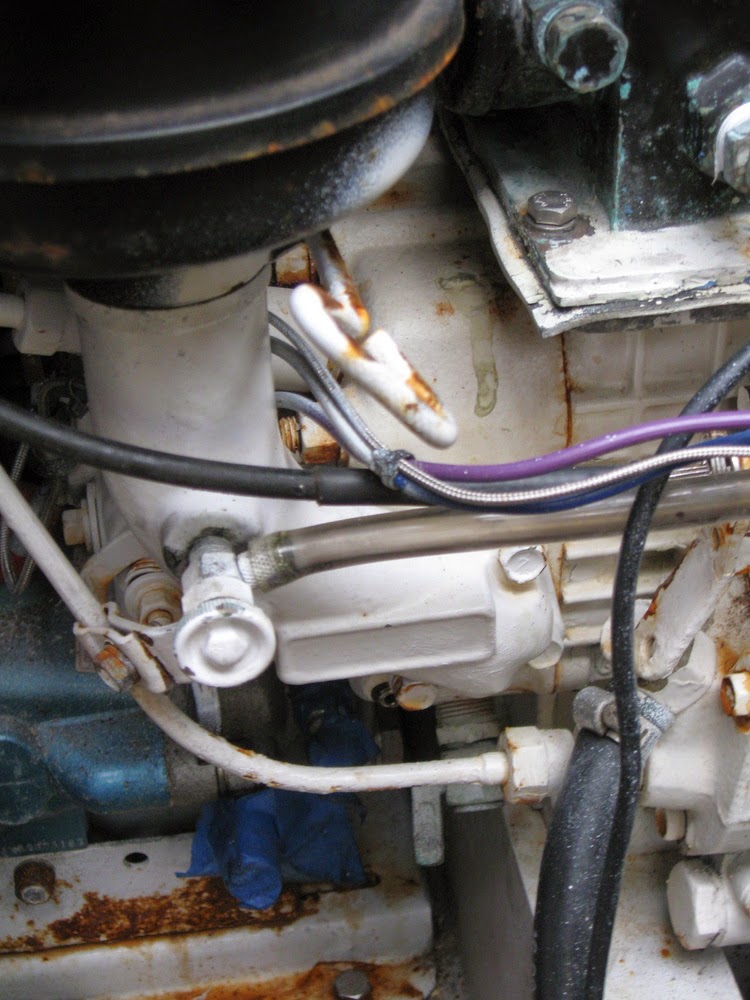Wednesday, March 11, 2015
Yes, the Can Can. (or, how I made a 'frugal' PCV system for our DC generator)
I have mentioned a few times that I consider myself rather,
ahem, Frugal. And I do know this can be a
fine line to walk along, being careful not to cross over into the downright
Cheap side of things. With this in mind
I have a tale to share with you which happened while we were overnighting in Anacortes
last week. A tale, I have to admit, where I found myself feeling a bit sheepish as I walked down the street peering into trash
cans, pulling off the covers, looking into dumpsters. All but crawling into them, or rooting around
while in search of my prey. An Aluminum Can
– beer or soda pop, I was flexible.
Oh sure, I could have stopped by Safeway and purchased a
beverage to get to the same goal – but given Kristi and I do not really drink
soda pop, and given I gave up CANNED beer
a long time ago, the thought of purchasing a product to pour it out – or force
consumption – just did not seem, well, very Frugal.
I finally acquired
one by asking a random person standing around (ok, he was part of a yacht club
that was in the marine for the weekend) if by chance there might be an empty
can I could have (come on, yacht club, rented the floating barge – you know
there were TONS of empty cans around by that point). And sure enough, an empty Canada Dry ginger ale
can was produced. In nice shape too!
Now, this post is not really about our approach to the three
R’s: Reduce, Reuse, Recycle if you will (Never could figure out what Math had to do
with the letter R, nor what picking up a tipped over lamp had to do with school…) This is more about what I wanted the can for, which was this:
What you see here is a poor man’s PCV system. The larger white tube is the crankcase
vent tube on our little Kubota EA300 diesel engine, used for our DC generator. When running, this tube vents a small amount of
gas that come largely from blow-by around the piston. All engines do this, though some with
more passion than others. The issue was that even with only a slight waft of blow-by, the gases from the crankcase
vent tube smelled. And given Viking Star's
age, the ‘bulkhead’ between the lazarette and the aft cabin is not as air-tight
as it once was (even if it ever was) the result when running our DC generator was
a stinky aft stateroom.
Stinky staterooms get the crinkled nose from Kristi. Crinkled
nose is an indication of something not desirable, which ultimately has Al
rooting around in city trash cans looking for recyclable aluminum cans. And ultimately, back to that 1st picture with
some additional explanation.
See the bigger white tube is the crankcase vent tube but the
key is the smaller sorta clear one. It is routed
over to the old ‘Jet Boost’ fitting on the intake manifold of the Kubota as
shown here:
Originally that fitting was used to introduce a slight
amount of extra fuel for assisting in very cold weather starting. But when I pulled off all the fuel piping to
simplify things, this connection was leftover.
And it works great as a way to provide a place to send those stinky
crankcase gases. In operation the crankcase
gases are deposited into the can where they cool and some amount of ‘crud’
falls out to the bottom of the can. Then
the gases are sent to the intake via the smaller tube through a combination of positive
pressure from the crankcase pressure and a small amount of vacuum created in
the intake via the air filter restrictions.
Finishing off the can is some plumbers putty to semi-seal things.
And it works well.
With this in place we are able to run our generator nicely without any aft
stateroom smell, and without any crinkled noses.
But I will say, even though this Can can solve the smell
problem, I will admit I felt a bit less than Frugal while in my search for it.
Subscribe to:
Post Comments (Atom)




No comments:
Post a Comment
Note: Only a member of this blog may post a comment.